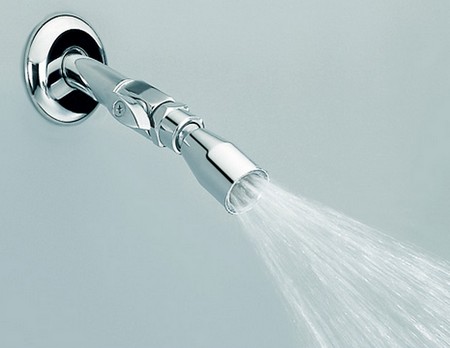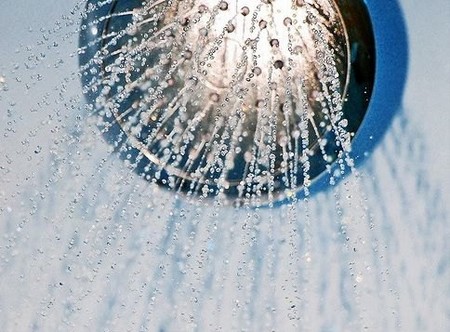Fitting a shower is essentially no more difficult than installing any other piece of equipment it usually involves fitting taps or valves, making a branch pipe, running a new waste, and so on. Before starting any plumbing work, turn off the water and drain the system as necessary. But because a shower is a mixer fitting and is usually designed to deliver a forceful spray of water, installation does pose some particular problems. It is best to consider all the potential problems before buying many of them can be solved by careful choice of shower type.
1) You have a direct plumbing system
This can be solved most easily by fitting an electric shower. For this, run a 15mm branch pipe from the nearest point of the cold water supply to the heater. If the control valve is part of the heater unit, the whole thing will have to be mounted inside the showering area. But if the control valve for the shower is separate from the heater positioned on the inlet to the heater – the control valve can be mounted within the showering area with the heater unit outside. The heater unit is generally fixed in position by simply screwing it to the wall.

The electrical supply has to be run from a separate fuse at the main fuse box -depending on the wattage of the shower, a supply of up to 45A will be needed: most showers (up to 7.2kW) need a 30A supply. It should be switched at the shower end using a special double-pole pull-cord switch of the correct rating.
Other types of Contemporary Flush Shower Heads can be fitted only if an indirect plumbing supply is installed for the shower. Unless the cistern feeding the hot water cylinder is larger than is normal, a new cistern will have to be installed in its place, and a 15mm cold supply pipe run from it to the shower unit. The hot supply can be taken from the existing hot water pipe.
2) The vertical distance from the base of the cold water cistern to the shower rose (called the ‘head’) is less than about a metre
If the head is between about one metre and 1.5m and the hot and cold pipe runs are both reasonably short (in effect, if both the shower and the hot water cylinder are more or less directly underneath the cistern) a shower may be fitted without any extra work: the force of the spray will depend on the mixer valve used. Otherwise, there are three solutions:
- the cistern may be raised to give a sufficient head. Pulling the cistern in the loft (if it is not there already) may be sufficient – this will involve lengthening all the pipes that connect to the cistern. If the cistern is already in the loft, there may be enough headroom to mount it on a platform – again, this involves lengthening all the pipes. A cistern full of water is very heavy so the platform must be constructed very sturdily. Remember to allow enough space above the cistern to give access to the ball valve and remember that you should now insulate underneath the cistern
- if raising the cistern is not practicable, a shower booster pump may be fitted into the hose between the shower valve and the rose or in the supply pipes to the shower valve. Simple splash-proof booster pumps are connected as shown overleaf: other boosters and pumps connected to the supply pipes need to be positioned away from the showering area so they are not splashed with water. If both hot and cold supplies are pumped, you could install a power shower, but this will often need larger supply pipes and a connection taken from the side of the hot water cylinder rather than the top
- an electric shower may be fitted. Since an electric shower usually takes its water supply from a cold water mains pipe, the pipe run may be rather long but the height of the cistern is unimportant.
3) The cold water flow fluctuates when other taps and so on are turned on. This may result in the spray from a shower becoming uncomfortably, or even dangerously, hot
This problem is most likely to arise when a shower is fitted downstream of other fittings, particularly if the branch pipes to the shower are taken off 15mm pipes, rather than larger ones. If you want to fit a bath/shower mixer, try turning on the existing bath cold tap and then turn on other taps and flush the WC to see if this affects the flow of water from the bath cold tap. The hot water flow can also fluctuate in the same way – this is less dangerous, but still uncomfortable.
The problem can be partly overcome by fitting a thermostatic valve, which will iron out small fluctuations in the hot or cold supply, leaving the temperature and flow reasonably stable. If the hot or cold supply should vary greatly, the shower will shut off- safe, but annoying.
Another solution is to run pipes for the shower alone directly to the hot water cylinder and cold water cistern. No other fittings should be connected to these pipes. In this case, a non-thermostatic shower will do, but a thermostatic shower head for low water pressure would still be safer.
Fitting an electric shower will also solve the problem.
4) A separate shower tray is to be installed
Separate shower trays, usually made of plastic, are generally simple to fix into place: the main problems will be running the waste pipe and providing a waterproof enclosure.

The best solution for the waste is to mount the shower tray on a plinth with a removable front so that access to the trap is possible once the shower tray has been installed. This should also avoid having to cut away the floorboards to run the waste pipe. You can also get special shower trays that allow access to the waste trap from above. Most showers can be fitted with a shallow-seal trap without any problems – you will have to work out the best way of running the 40mm waste pipe.
For providing an enclosure, you have the choice of building solid partition side walls or of fitting toughened glass side screens – it may be possible to use an existing wall for one of the sides. With either arrangement, you will need a door or curtain and tiles on any solid walls. In a bedroom a separate cubicle may be better.